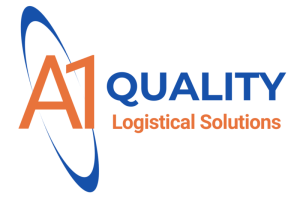A1 Quality Logistical Solutions
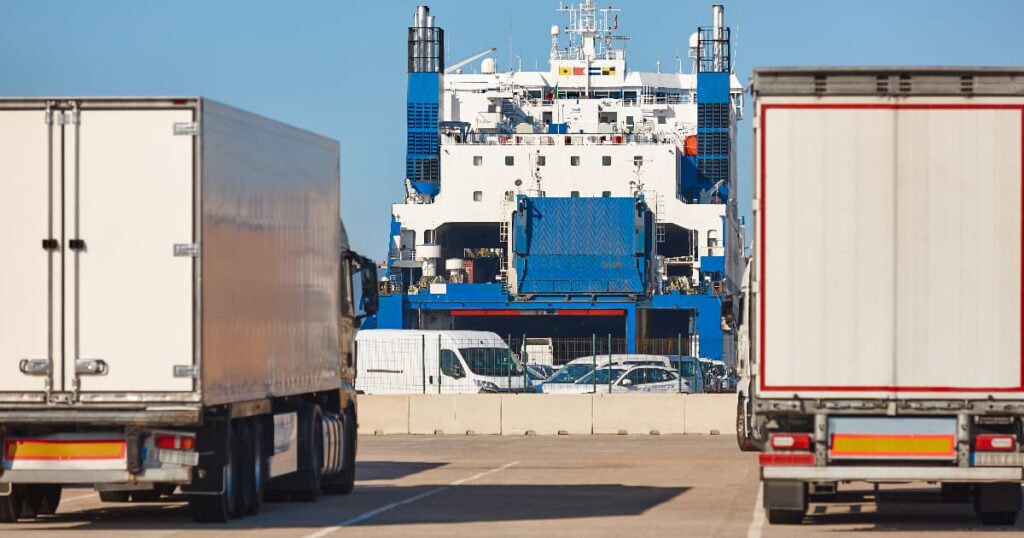
- By Haley
- September 25, 2025
Table of Contents
Key Highlights
- Cross-docking and transloading are essential logistics operations that enhance supply chain efficiency and order fulfillment.
- Cross-docking involves moving goods directly between inbound and outbound transportation without long-term storage, leading to faster deliveries.
- Transloading allows for the switching of transportation modes, providing flexibility in logistics management tailored for international shipping.
- Each method has unique advantages; cross-docking excels in speed, while transloading offers versatility for complex shipping needs.
- Understanding scenarios where each process thrives can help businesses make informed decisions to optimize their logistics strategy.
- Choosing the right solution depends on specific logistics needs, costs, and the overall impact on operational efficiency.
Introduction
Navigating the complexities of logistics can seem daunting, especially as businesses evolve to meet modern demands. Understanding the differences between cross-docking and transloading is essential for optimizing supply chain operations. These methods not only affect inventory management and order fulfillment but also impact overall operational efficiency. With the growth of eCommerce, adopting the right shipping strategy can enhance customer satisfaction and streamline logistics processes. This guide will clarify how each method works and help you make informed decisions that align with your business model and customer needs.
Understanding Modern Logistics Solutions
Navigating the landscape of logistics solutions can feel overwhelming. However, recognizing efficient approaches, such as cross-docking and transloading, often leads to optimized supply chain operations. These methods facilitate smoother order fulfillment and enhance customer service by addressing shipping delays and inventory management challenges. Leveraging advanced technology, companies can achieve better supply chain visibility and operational efficiency, ultimately contributing to cost savings and improved customer satisfaction. Understanding these logistics processes is essential for business owners aiming to elevate their logistics strategies and adapt to the ever-evolving demands of various industries.

The Evolving Role of Third-Party Logistics Providers
Third-party logistics providers have transitioned into vital partners for businesses navigating the complexities of supply chain management. With advancements in technology and logistics operations, these service providers efficiently handle order fulfillment, inventory management, and transportation services. This evolution not only enhances operational efficiency but also significantly boosts customer satisfaction through improved shipping strategies. By leveraging the expertise of logistics companies, businesses can maintain agility in a competitive landscape, optimize costs, and focus on core competencies to drive growth. As logistics needs shift, third-party providers are well-positioned to adapt and support businesses through innovative solutions.
Why Businesses Outsource Supply Chain Operations
Outsourcing supply chain operations allows businesses to streamline their logistics processes while focusing on core competencies. By collaborating with experienced logistics providers, companies can enhance order fulfillment efficiency, manage inventory levels more effectively, and reduce overall shipping costs. This partnership not only boosts customer satisfaction through reliable service but also provides access to advanced technology and industry expertise. In today’s competitive landscape, outsourcing offers a strategic advantage, enabling businesses to quickly adapt to market conditions and scale operations without the burden of maintaining their own warehouse.
What Is Cross-Docking?
Cross-docking is a logistics practice where products are unloaded from incoming transport and immediately loaded onto outbound vehicles, minimizing or eliminating storage time. This system enhances efficiency and speed in the supply chain, making it ideal for high-volume and perishable goods.
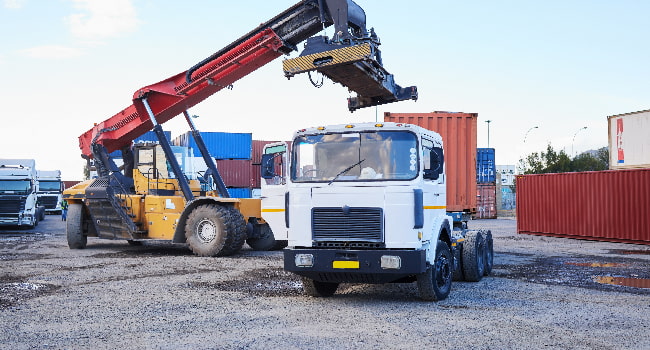
Cross-Docking Defined: Moving Goods Without Storage
Cross-docking is a logistics strategy designed to streamline the movement of goods by minimizing storage time. In this process, products are received from suppliers and immediately transferred to transportation vehicles for delivery to customers, bypassing the need for warehousing. By reducing the time that products spend in a warehouse, businesses can enhance inventory management and boost order fulfillment efficiency. This nimble approach not only helps lower shipping costs but also improves customer satisfaction through quicker delivery times, making it an attractive choice for many ecommerce brands and logistics providers.
The Step-by-Step Cross-Docking Process
Cross-docking operations begin with receiving incoming shipments. Quickly unloading goods from transportation vehicles, the focus shifts to real-time sorting based on customer orders. Utilizing advanced technologies, staff efficiently categorize products, ensuring they match the logistics requirements for outgoing shipments. As items are readied for dispatch, they move directly to delivery vehicles, minimizing storage time. This streamlined fulfillment process not only reduces handling costs but also improves order accuracy. Ultimately, effective cross-docking enhances overall supply chain management, contributing to stronger customer satisfaction and improved efficiency.
Key Advantages of Cross-Docking
Streamlined logistics operations are among the standout benefits of cross-docking, allowing for faster order fulfillment and bolstered customer satisfaction. By minimizing storage time, businesses can reduce inventory management costs while enhancing supply chain visibility, thus improving overall operational efficiency. Additionally, cross-docking promotes lower shipping costs by optimizing transportation services and reducing handling. This method also supports eCommerce brands by ensuring that new products move quickly through the supply chain, ultimately leading to increased responsiveness to market conditions and a more efficient shipping process.
Common Applications of Cross-Docking in Different Industries
Cross-docking finds its place across various industries, enhancing logistics operations and order fulfillment. In retail, it streamlines the flow of goods, reducing inventory levels and ensuring that customer orders are promptly met. The food and beverage sector benefits from cross-docking by efficiently handling perishable items, minimizing spoilage and waste. E-commerce businesses leverage this method to expedite shipping processes, improving customer satisfaction. Additionally, automotive and electronics industries utilize cross-docking to manage just-in-time deliveries, optimizing the entire supply chain and contributing to cost savings. This versatility makes cross-docking a valuable strategy across many sectors.
What Is Transloading?
Transloading involves transferring cargo from one mode of transportation to another, allowing for optimized shipping routes and cost efficiencies. This process is essential in logistics, especially for businesses handling varying goods that require flexibility in their supply chain management.
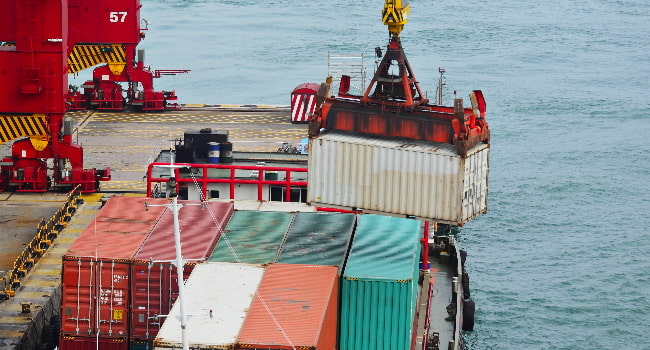
Transloading Explained: Switching Transportation Modes
Transloading involves transferring goods from one mode of transport to another, optimizing logistics operations and improving overall supply chain efficiency. This method is especially useful in situations where cargo needs to adapt to different transportation services, such as moving from trucks to trains or ships. By leveraging transloading, businesses can enhance their shipping strategies, reduce costs, and improve inventory management. It allows for greater flexibility in handling customer orders while maintaining high levels of service, ensuring that products reach their destination swiftly and safely.
Major Steps in the Transloading Process
Transloading involves several key steps to ensure efficient cargo transfer across different transportation modes. Initially, products arrive at a designated facility, where they are unloaded from one mode of transport, such as trucks or ships. Next, inventory management plays a crucial role, as items are sorted, consolidated, and reloaded onto the appropriate transport vehicle. Throughout this process, logistics providers monitor shipments closely to maintain supply chain visibility. Finally, effective communication with stakeholders ensures that customer orders meet delivery timelines while optimizing costs associated with the entire freight shipping process.
Primary Benefits of Transloading
Transloading offers significant advantages for businesses looking to optimize their logistics operations. By switching between transportation modes, companies can enhance supply chain efficiency, making it easier to adapt to varying market conditions. This flexibility can lead to cost savings on shipping expenses and allow for better inventory management. Additionally, transloading provides improved supply chain visibility, ensuring that customer orders are fulfilled on time. Companies can leverage logistics services tailored to their specific needs, bolstering customer satisfaction and creating a more responsive shipping strategy. Ultimately, it’s a powerful tool for enhancing operational efficiency.
Typical Scenarios Where Transloading Is Used
Transloading shines in various scenarios, particularly when shipping goods over long distances. In situations where freight must switch from rail to truck, this method provides seamless connectivity, ensuring timely deliveries. It is also advantageous for ecommerce brands needing rapid order fulfillment, especially during peak seasons. Additionally, businesses facing strict delivery timelines or fluctuating inventory levels often utilize transloading for its flexibility. Lastly, companies looking to simplify shipping logistics between different geographic locations frequently turn to transloading for efficient and cost-effective solutions.
Key Differences Between Cross-Docking and Transloading
Understanding the distinctions between these two logistics strategies is essential for optimizing supply chain operations. Cross-docking emphasizes speed, where products move rapidly from one transportation mode to another, minimizing storage time. In contrast, transloading offers flexibility, allowing goods to be transferred between various freight systems, thus accommodating a variety of shipping needs. Both approaches have unique facility requirements and are suited for different product types. When evaluating these methods, consider factors such as operational efficiency, cost savings, and alignment with your overall shipping strategy.
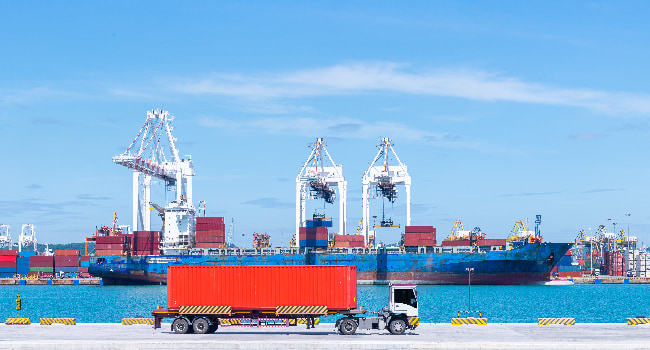
Processes Compared: Speed vs. Flexibility
Speed and flexibility are crucial factors in the decision-making process when comparing logistics methods. Cross-docking excels in speed, allowing for rapid movement of goods through streamlined processes, ideal for businesses needing fast order fulfillment. On the other hand, transloading offers greater flexibility, accommodating various transportation modes and more complex shipping requirements. This adaptability makes it suitable for companies with diverse inventory needs and fluctuating shipping volumes. Understanding the balance between these elements helps businesses optimize their supply chain operations for efficiency and customer satisfaction.
Facility Requirements and Infrastructure
When considering cross-docking, specific facility requirements and infrastructure play a vital role in ensuring operational efficiency. Locations must have a design that allows for the quick transfer of goods, with adequate docking stations and minimal storage areas. This setup facilitates rapid order fulfillment while maintaining supply chain visibility. Moreover, investing in advanced technology, such as a robust warehouse management system, enhances tracking and inventory management. A friendly relationship with logistics providers also aids in building a responsive supply chain, ensuring customer satisfaction and optimal distribution services.
Product Types Best Suited for Each Method
Cross-docking is particularly advantageous for high-velocity and perishable products. Items such as fresh produce, dairy, and fast-moving consumer goods benefit from this method due to their limited shelf life and need for quick turnaround. On the other hand, transloading excels with bulky or heavy items, including machinery, construction materials, and oversized freight, which require more flexibility in transportation modes. By understanding the nature of your products, you can make informed decisions about which logistics method aligns best with your supply chain strategy, ensuring optimal efficiency and customer satisfaction.
Cross-Docking: Deep Dive Into Operations
The layout of a cross-docking facility plays a crucial role in operational efficiency. Well-structured workflows and clear pathways enable warehouse workers to swiftly move products from one transport mode to another, minimizing delays and optimizing inventory management. Technology also enhances this process, with warehouse management systems streamlining order processing and real-time tracking. This not only improves supply chain visibility but also significantly boosts customer satisfaction through timely deliveries. Implementing cross-docking requires careful consideration of facility design and access to advanced logistics services to maximize benefits.
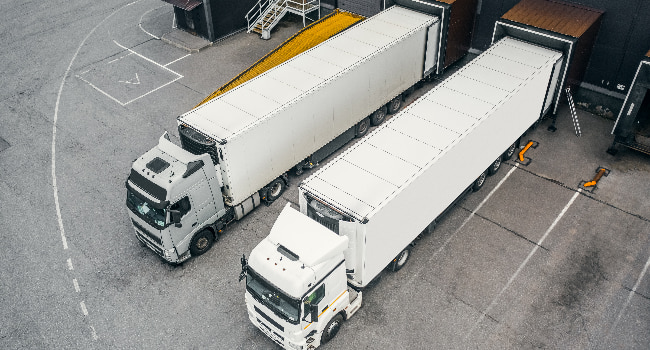
Facility Layout and Workforce Requirements
Effective facility layout is crucial in optimizing cross-docking operations. Streamlined design minimizes movement and enhances order fulfillment speed. Strategically placing docks, staging areas, and inbound/outbound zones facilitates rapid product flow. Workforce requirements also play a vital role. A well-trained team can efficiently manage the swift turnover of goods while ensuring adherence to safety protocols. Incorporating warehouse management software can aid in tracking inventory levels and assigning tasks, enhancing overall operational efficiency. Together, a thoughtful layout and skilled workforce create a robust environment for successful logistics services.
How Technology Powers Efficient Cross-Docking
Integrating advanced technology into cross-docking operations allows for streamlined logistics processes and improved order fulfillment. Automated systems help manage inventory levels efficiently, ensuring quick turnover and optimal warehouse space utilization. Real-time data analytics enhance supply chain visibility, enabling organizations to track shipments and moods effectively. Moreover, sophisticated warehouse management software simplifies the coordination between transportation services, facilitating seamless transitions between inbound and outbound logistics. This synergy boosts operational efficiency and minimizes shipping costs, ultimately leading to increased customer satisfaction and better service delivery. Embracing technology is key for businesses seeking to thrive in the competitive logistics industry.
Cost Considerations for Implementing Cross-Docking
Implementing cross-docking can lead to substantial cost savings, but it requires careful consideration of various factors. Initial investments in suitable technology, such as warehouse management systems, and infrastructure must be evaluated to ensure seamless logistics operations. Additionally, assessing labor costs, including warehouse workers and their efficiency, is crucial for optimizing the fulfillment process. Balancing overheads with potential reductions in inventory management and transportation costs can ultimately enhance your bottom line. Making informed decisions in this area can greatly influence customer satisfaction and overall service quality.
Transloading: In-Depth Analysis
A thorough examination of transloading reveals its critical role in seamless logistics operations. Essential equipment, such as forklifts and conveyor systems, ensures smooth handling of goods as they switch transportation modes. This process not only enhances inventory management but also optimizes shipping services, making it a favorite among logistics providers. By focusing on the management of multimodal shipments, businesses can effectively control costs while improving customer satisfaction. Understanding these aspects can significantly impact operational efficiency and drive delivery success across various industries.
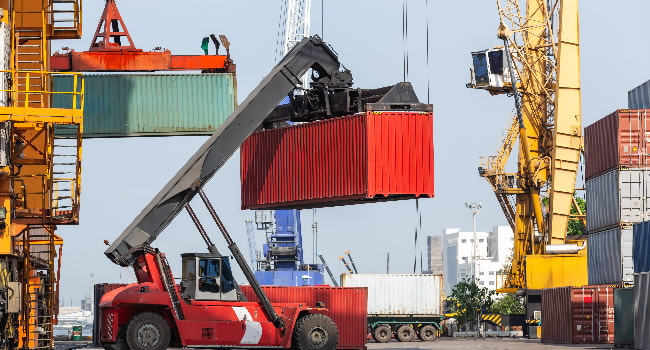
Essential Equipment and Handling Procedures
A well-run transloading operation relies on essential equipment to ensure smooth handling of goods. Items like forklifts, pallet jacks, and conveyors facilitate the efficient transfer of products between different transportation modes. Additionally, having appropriate storage solutions for temporary goods is crucial for maintaining order in logistics operations. Training warehouse workers in safe handling procedures further enhances operational effectiveness, ensuring products are managed carefully throughout the process. This focus on safety and efficiency not only optimizes inventory management but also contributes to customer satisfaction by keeping the shipping process streamlined and reliable.
Managing Multimodal Shipments
Success in managing multimodal shipments hinges on effective coordination between different transportation methods. Integrating road, rail, air, and sea allows for optimized logistics operations, helping businesses adapt to fluctuating inventory levels and market conditions. Leveraging advanced technology, like warehouse management software, enhances supply chain visibility and minimizes delays. A streamlined fulfillment process ensures that customer orders are handled efficiently, which contributes to higher customer satisfaction. This multi-faceted approach not only lowers shipping costs but also supports a robust shipping strategy, making it a crucial component of modern supply chain management.
Costs Associated With Transloading Services
Transloading services can offer substantial benefits, but they also come with specific costs that businesses need to consider. Freight charges for multimodal transport, handling fees for transferring goods between modes, and potential storage costs at transloading facilities all play a role in the overall expense. Additionally, using advanced technology like warehouse management systems can enhance operational efficiency but may add to the initial investment. It’s vital for business owners to evaluate these costs against the potential for improved supply chain management and customer satisfaction to determine if transloading is the right fit.
When Should You Use Cross-Docking?
Cross-docking is ideal when dealing with high-velocity and perishable goods, as it minimizes storage time and accelerates the supply chain. Businesses such as grocery retailers and e-commerce companies often benefit from this method to enhance efficiency and reduce costs.
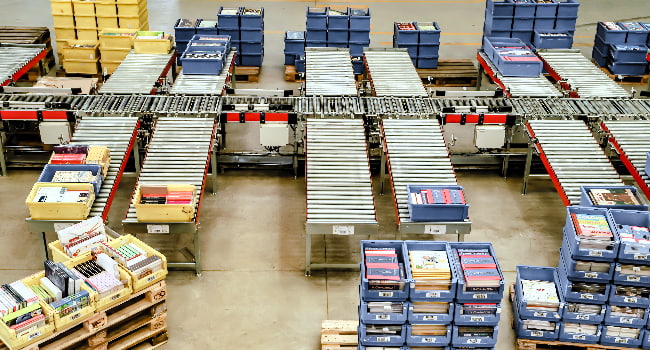
Ideal Situations: High Velocity and Perishable Goods
Rapid movement of goods defines ideal scenarios for employing cross-docking, especially within the realm of high-velocity and perishable products. When supply chain management focuses on items with tight turnover, such as fresh produce or time-sensitive commodities, immediate processing and distribution become crucial. This approach minimizes delays often associated with lengthy storage periods, ensuring optimal inventory levels and enhancing customer satisfaction. E-commerce brands and grocery chains particularly benefit as cross-docking streamlines their fulfillment process, reducing shipping costs while maximizing operational efficiency and supporting overall business growth.
Business Models That Benefit From Cross-Docking
Several business models thrive on the advantages of cross-docking, particularly those that prioritize speed and efficiency. For example, eCommerce brands often utilize this method due to the quick turnaround required for order fulfillment. Additionally, companies with high inventory turnover, such as retail outlets, benefit from reduced storage costs and enhanced customer satisfaction. Perishable goods suppliers also find cross-docking essential, as it allows for swift movement of products to maintain freshness, thus optimizing logistics operations while minimizing waste and improving overall supply chain management.
Potential Downsides and Limitations
Cross-docking, while efficient, has its share of potential downsides that businesses should consider. For one, not having a dedicated warehouse space can lead to challenges in inventory management, especially during peak seasons or when unexpected demand arises. Additionally, reliance on logistics providers may create vulnerabilities in the supply chain if those partners experience disruptions. It’s essential to assess the availability of skilled warehouse workers to maintain operational efficiency, as the success of cross-docking hinges on timely execution and coordination among various logistics services. Overall, businesses should weigh these limitations to determine the best approach for their supply chain operations.
When Is Transloading the Better Choice?
Transloading is preferable when dealing with international shipments, long-haul transportation, or when freight restrictions limit direct routes. It offers flexibility in handling diverse cargo types and can effectively navigate logistical challenges while optimizing costs and delivery times.
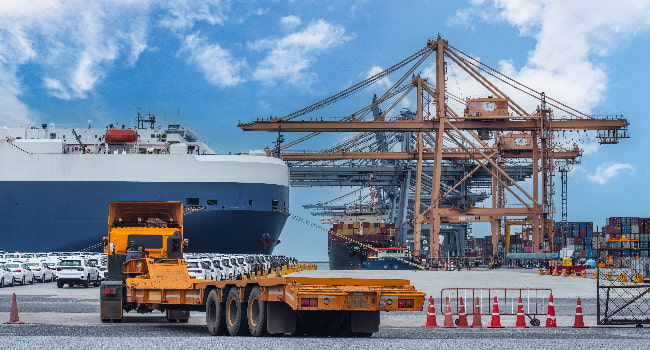
Supporting International and Long-Haul Supply Chains
In today’s interconnected world, international and long-haul supply chains play a crucial role in moving goods efficiently. Transloading is particularly supportive in these scenarios, enabling seamless transfers between different transportation modes—like rail to truck—ideal for long distances. This flexibility minimizes delays and ensures timely delivery, aligning with customer expectations. Furthermore, leveraging advanced logistics services enhances operational efficiency, reduces shipping costs, and provides greater supply chain visibility. By adopting transloading, businesses can navigate complex shipping routes while maintaining costs and maximizing customer satisfaction, essential for thriving in the global marketplace.
Overcoming Freight Restrictions and Route Challenges
Navigating freight restrictions and route challenges can be a daunting task for any business. Utilizing transloading services allows companies to switch transportation modes, thus creating more flexible routes that circumvent limitations imposed by geography or regulations. This approach not only optimizes shipping strategies but also enhances overall logistics operations. By partnering with an experienced logistics provider, businesses can tap into their industry expertise and robust network, ensuring timely delivery while keeping shipping costs in check. This ultimately contributes to improved customer satisfaction and a streamlined supply chain.
Risks and Mitigation Strategies With Transloading
Transloading, while offering flexibility in logistics operations, comes with specific risks. These include potential damage during mode transitions, delays from scheduling conflicts, and higher shipping costs if not planned effectively. To mitigate these risks, it’s essential to establish reliable partnerships with experienced logistics providers who understand the nuances of your supply chain. Utilizing advanced technology for tracking and communication can further enhance supply chain visibility, ensuring timely updates on shipments. By conducting thorough assessments of routes and handling equipment, businesses can streamline the transloading process and safeguard against disruptions.
Choosing the Right Solution for Your Business
Evaluating your logistics needs takes careful thought. Consider your current supply chain operations, including the inventory levels and order fulfillment speed that align with your business model. Comparing costs, services, and scalability will help identify which solution fits best. Engaging with a reliable logistics provider can enhance your operational efficiency and customer service. Ask potential partners about their expertise and the technology they use for warehouse management. A single point of contact can streamline communication and support your growth as you navigate the complexities of the logistics landscape.

Assessing Your Specific Logistics Needs
Understanding the logistics landscape starts with a clear assessment of your specific needs. Begin by evaluating your current supply chain operations and identifying areas for improvement, such as order fulfillment efficiency or inventory management practices. Consider how logistics providers can enhance your customer experience and meet the demands of your customer base. With the growth of ecommerce, it’s vital to analyze your shipping strategy and operational efficiency. Engaging with potential service providers will help clarify how they can tailor solutions to fit your business model for optimal results.
Comparing Costs, Services, and Scalability
Evaluating logistics solutions involves analyzing costs, services, and scalability. When assessing these factors, consider the total cost of ownership, which includes both operational expenses and potential savings, such as reduced shipping costs or improved order fulfillment efficiency. Understanding the services offered by providers can aid in selecting one that aligns with your business model. Scalability is also paramount; as your customer base grows, the ability to adapt and expand logistics operations can significantly enhance customer satisfaction and maintain service quality across various sales channels.
Questions to Ask Potential 3PL Providers
Finding the right third-party logistics (3PL) provider can significantly enhance logistics operations. To begin, inquire about their expertise in your industry and the range of services they offer, ensuring compatibility with your specific needs. Asking about their technology capabilities, such as warehouse management systems and inventory tracking, is crucial for maintaining supply chain visibility. Additionally, discuss their approach to cost control and customer service, particularly how they handle customer orders. Lastly, evaluating their commitment to operational efficiency will help ensure they align with your business growth strategy.
Credentials and Industry Certifications to Look For
When you are trying to choose the best 3PL provider for your business, one of the first things to check is their credentials. Industry certifications are a strong indicator that a service provider is committed to quality, safety, and compliance. These certifications demonstrate that the provider has met rigorous standards set by independent organizations.
Look for providers who can show proof of relevant certifications for your industry. For example, if you are liquidating electronics, a provider with an R2 (Responsible Recycling) or e-Stewards certification is essential for ensuring proper e-waste handling. Verifying these credentials helps you vet potential partners and ensure they can manage your project legally and responsibly.
Key credentials to look for include:
- ISO 9001: A certification for quality management systems, indicating a commitment to consistent service.
- Industry-Specific Certifications: Such as those for handling food-grade, medical, or hazardous materials.
- Security Certifications: Like C-TPAT (Customs Trade Partnership Against Terrorism) if international shipping is involved.
- Proof of Insurance and Licensing: Essential for protecting your business from liability.
Conclusion
Navigating the complexities of supply chain operations can feel overwhelming, but understanding the key differences between cross-docking and transloading is essential. Businesses can optimize their logistics operations by selecting the method that aligns best with their specific needs, enhancing order fulfillment and improving customer satisfaction. From cost savings to increased operational efficiency, the right choice can significantly impact the bottom line. As the logistics industry continues to evolve, staying informed about these strategies will empower business owners to make informed decisions for sustainable growth. Embrace the insights gained here and elevate your logistics game!
Frequently Asked Questions
How do I know if cross-docking or transloading fits my supply chain?
To determine if cross-docking or transloading suits your supply chain, assess your shipment volume, delivery speed requirements, product types, and geographical considerations. Each method has distinct advantages that can enhance efficiency in different operational contexts. Analyze your specific needs for optimal results.
Can third-party logistics providers handle both cross-docking and transloading?
Yes, third-party logistics (3PL) providers can manage both cross-docking and transloading operations. They utilize specialized facilities and technology to efficiently switch between these methods, optimizing supply chains based on specific client needs while enhancing speed and flexibility in logistics processes.

Haley serves as the Marketing Manager for A1 Quality Logistical Solutions. She joined A1QLS in 2023 with her prior experience gained with GXO and XPO Logistics.
